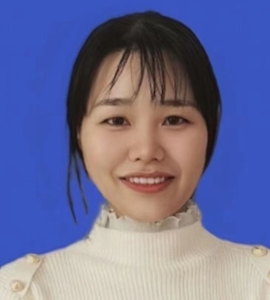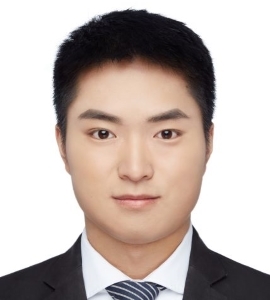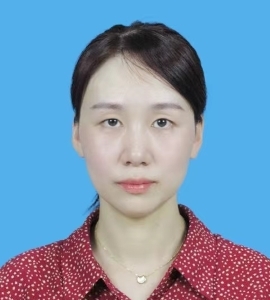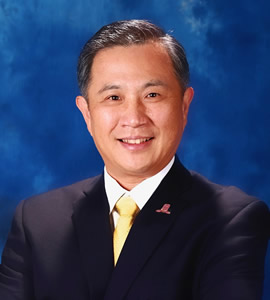Overview
Graph-structured data are widespread in the real-world applications, such as social networks, recommender systems, knowledge graphs, chemical molecules etc. Despite the success of Euclidean space for graph-related learning tasks, its ability to model complex patterns is essentially constrained by its polynomially growing capacity. Recently, hyperbolic spaces have emerged as a promising alternative for processing graph data with tree-like structure or power-law distribution, owing to its exponential growth property. Different from the Euclidean space which expands polynomially, the hyperbolic space grows exponentially which makes it gains natural advantages in abstracting tree-like or scale-free graphs with hierarchical organizations.
In this tutorial, we will give an introduction to this emerging field in graph representation learning, with the express purpose of being accessible to all audiences. We first give a brief introduction to graph representation learning as well as some preliminary Riemannian and hyperbolic geometry. We then will comprehensively revisit the hyperbolic embedding techniques including hyperbolic shallow models and hyperbolic neural networks. In addition, we will give the technical details of the current hyperbolic graph neural networks, by unifying them into a general framework and summarizing the variants of each component. Moreover, we will introduce a series of related applications in a variety of fields. In the last part, we will discuss several advanced topics about hyperbolic geometry for graph representation learning, which potentially serve as guidelines for further flourishing the non-Euclidean graph learning community.
Syllabus
The topics of this tutorial include (but are not limited to) the following:
- Introduction (Min, 30min) Video
- 1.1 An Overview of Graph Representation Learning
- 1.2 Brief Introduction of Riemannian Geometry
- 1.3 Motivation of Hyperbolic Graph Representation Learning(HGRL)
- 1.4 QA&Break
- Hyperbolic Networks (Menglin, 30min) Video
- 2.1 Hyperbolic Shallow Models
- 2.2 Hyperbolic Neural Networks
- 2.3 Hyperbolic Graph Neural Networks
- 2.4 QA&Break
- Applications (Menglin,45min) Video
- 3.1 HGRL for Recommender Systems
- 3.2 HGRL for Knowledge Graph
- 3.3 HGRL for Chemistry and Biology
- 3.4 HGRL for Other Applications
- 3.5 QA&Break
- Advanced Topics (Min, 60min) Video
- 4.1 Complex Structures
- 4.2 Evolving Interactions
- 4.3 Geometry-aware Learning
- 4.4 Trustworthy and Scalability
- 4.5 QA&Break
Presenters’ Biography
Dr. Min Zhou is currently a Principal Research Engineer of Huawei Noah’s ARK LAB, Shenzhen, China. She received the B.S. degree in Automation from the University of Science and Technology of China, and the Ph.D. degree from Industrial Systems Engineering and Management Department, National University of Singapore, respectively. Her interests include pattern mining and machine learning, and their applications in sequence and graph data. Her several works were published at top conferences, including KDD, WWW, ICDE, and SIGIR. She co-organized the 1st Workshop on Machine Learning in Software Engineering (MLiSE) @ ECML-PKDD 2021.
Mr. Menglin Yang is currently a PhD student in the Department of Computer Science and Engineering, The Chinese University of Hong Kong (CUHK). His research interests include hyperbolic graph learning and machine learning. Besides, he also focuse on real-world applications, including recommender systems, knowledge graph, drug processing. His several works related to hyperbolic graph representation learning were published at recent top conferences, including KDD 2021, WSDM 2022, WWW 2022.
Ms. Lujia Pan is the expert of Huawei Noah’s Ark Lab, Shenzhen, China. She currently heads the Intelligent operation and maintenance team and is working closely with a group of researchers and engineers on different projects such as fault diagnosis, anomaly detection, prediction in ICT(information and communications technology) network. Her research interests are on various issues related to improving the performance and reliability of intelligent operation and maintenance, including representation learning, time series analysis, label denoising, and active learning. In these research areas, she has published more than 20 technical papers in journals and conferences and is the inventor of more than 40 patents. She is currently a part-time PhD student in Department of Control Systems and Engineering, Xi’an Jiaotong University. Before that she received her B.S. and M.S. degrees in information engineering from Chongqing University of Posts and Telecommunications.
Prof. Irwin King is the Chair and Professor of Computer Science & Engineering at The Chinese University of Hong Kong. His research interests include machine learning, social computing, AI, web intelligence, data mining, and multimedia information processing. In these research areas, he has over 300 technical publications in journals and conferences. He is an Associate Editor of the Journal of Neural Networks (NN). He is an IEEE Fellow, an ACM Distinguished Member, and a Fellow of Hong Kong Institute of Engineers (HKIE). He has served as the President of the International Neural Network Society (INNS), General Co-chair of The WebConf 2020, ICONIP 2020, WSDM 2011, RecSys 2013, ACML 2015, and in various capacities in a number of top conferences and societies such as WWW, NIPS, ICML, IJCAI, AAAI, APNNS, etc. He is the recipient of the ACM CIKM2019 Test of Time Award, the ACM SIGIR 2020 Test of Time Award, and 2020 APNNS Outstanding Achievement Award for his contributions made in social computing with machine learning. In early 2010 while on leave with AT&T Labs Research, San Francisco, he taught classes as a Visiting Professor at UC Berkeley. He received his B.Sc. degree in Engineering and Applied Science from California Institute of Technology (Caltech), Pasadena and his M.Sc. and Ph.D. degree in Computer Science from the University of Southern California (USC), Los Angeles.



